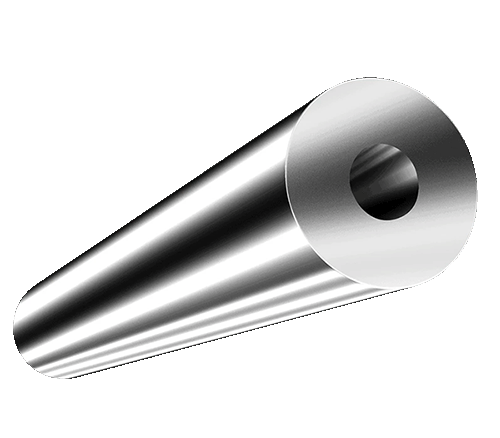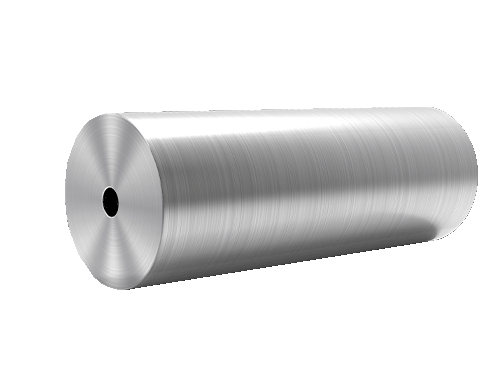Shandong Qilu lndustrial Co.,Ltd.
The Role of Hollow Round Tubes in Sustainable Architecture
Introduction

Sustainable architecture seeks to minimize environmental impact while maximizing efficiency and durability. As architects and builders embrace eco-friendly materials and design practices, hollow round tubes are emerging as a significant component in sustainable architecture. Their versatility, strength, and minimal material use make them ideal for a range of applications, contributing to greener and more efficient building solutions. This blog explores the role of hollow tubes in sustainable architecture, highlighting their benefits, applications, and key considerations.
What Are Hollow Round Tubes?
Hollow round tubes are cylindrical structural elements with a hollow center. Made from various materials such as steel, aluminum, or composite materials, these tubes offer a balance of strength and lightweight properties. Their unique design allows for efficient load-bearing while using less material than solid sections.
Composition and Characteristics
| Material | Density (g/cm³) | Tensile Strength (MPa) | Common Uses |
|---|---|---|---|
| Steel | 7.85 | 250-500 | Structural supports, frames |
| Aluminum | 2.70 | 110-290 | Facades, structural components |
| Composite | Varies | 200-700 | Specialized architectural elements |
Benefits of Hollow Round Tubes in Sustainable Architecture
Material Efficiency
Hollow tubes are engineered to use less material while maintaining strength and stability. This efficiency reduces the overall environmental impact of a structure by minimizing the amount of raw material needed and lowering the associated energy consumption and emissions.
Material Efficiency Comparison:
| Tube Type | Material Used per Unit Volume (kg) | Strength (MPa) | Environmental Impact |
|---|---|---|---|
| Hollow Round Tube | Low | High | Low |
| Solid Tube | High | High | High |
| Solid Beam | High | Varies | High |
Structural Strength and Stability
Despite their lightweight nature, hollow tubes offer exceptional structural strength. Their design allows for effective distribution of forces, making them suitable for load-bearing applications in both vertical and horizontal structures.
Versatility in Design
Hollow round tubes can be used in a variety of architectural and structural applications. Their adaptability makes them suitable for creating complex shapes and designs, contributing to innovative and aesthetically pleasing structures.
Enhanced Durability
Many hollow tubes are made from materials that are resistant to corrosion, weathering, and wear. This durability extends the lifespan of the components, reducing the need for repairs and replacements over time.
Lightweight Properties
The lightweight nature of hollow tubes reduces the load on foundations and supporting structures, leading to potential cost savings in construction. This also facilitates easier handling and faster installation.
Applications of Hollow Round Tubes in Sustainable Architecture
Structural Frameworks
Hollow round tubes are commonly used in the structural frameworks of buildings and bridges. Their strength and minimal material use make them ideal for creating robust yet lightweight support systems.
Facades and Cladding
In modern architecture, hollow tubes are used in facades and cladding systems to create visually striking and functional designs. Their ability to be customized and arranged in various patterns enhances both aesthetics and performance.
Renewable Energy Structures
Hollow tubes play a crucial role in the construction of renewable energy structures, such as wind turbine towers and solar panel supports. Their strength-to-weight ratio is essential for supporting these energy systems efficiently.
Interior Design Elements
Architects and designers use hollow tubes for interior elements such as railings, partitions, and furniture. Their sleek appearance and structural properties make them a popular choice for contemporary design.
Green Building Systems
In green building systems, hollow tubes contribute to sustainable practices by supporting energy-efficient designs and incorporating renewable energy technologies. Their role in reducing material use and energy consumption aligns with the goals of sustainable architecture.
Comparison of Hollow Round Tubes with Other Structural Elements
To understand the advantages of hollow round tubes, it’s helpful to compare them with other common structural elements:
| Property | Hollow Round Tube | Solid Beam | I-Beam |
|---|---|---|---|
| Material Efficiency | High | Low | Moderate |
| Weight | Light | Heavy | Moderate |
| Structural Strength | High | High | High |
| Design Flexibility | High | Low | Moderate |
| Cost | Moderate | Low | Moderate |
Key Considerations When Using Hollow Round Tubes
Material Selection
Choosing the right material for hollow tubes is crucial for achieving the desired performance and durability. Factors such as environmental conditions, load requirements, and aesthetic preferences should guide material selection.
Fabrication and Installation
Proper fabrication and installation are essential to ensure the structural integrity of hollow round tubes. It’s important to follow industry standards and best practices to prevent issues such as misalignment or stress concentrations.
Maintenance
Regular maintenance is necessary to ensure the longevity and performance of hollow tubes. This includes inspecting for signs of wear, corrosion, or damage and addressing any issues promptly.
Innovations and Future Trends

Advanced Materials
Ongoing research and development in materials science are leading to the creation of advanced hollow round tubes made from high-performance composites and alloys. These innovations promise even greater efficiency and durability.
Smart Structures
The integration of smart technologies into hollow tubes, such as sensors and monitoring systems, is enabling real-time performance tracking and maintenance alerts. This trend enhances the functionality and sustainability of architectural designs.
Sustainable Manufacturing
Efforts to improve the sustainability of manufacturing processes for hollow tubes are ongoing. Innovations in production techniques aim to reduce energy consumption, waste, and environmental impact.
Conclusion
Hollow round tubes are playing a pivotal role in advancing sustainable architecture. Their benefits, including material efficiency, structural strength, versatility, and durability, make them an ideal choice for various architectural and structural applications. By embracing hollow round tubes, architects and builders can contribute to greener and more efficient construction practices, aligning with the goals of sustainability and innovation in the built environment.
FAQ
Q:What are hollow round tubes used for in sustainable architecture?
A:Hollow round tubes are used for structural frameworks, facades, renewable energy structures, interior design elements, and green building systems due to their strength, material efficiency, and versatility.
Q:How do hollow round tubes compare to solid beams in terms of environmental impact?
A:Hollow round tubes generally have a lower environmental impact compared to solid beams because they use less material while providing equivalent or superior structural strength.
Q:What factors should be considered when selecting hollow round tubes for a project?
A:Key factors include material selection, load requirements, environmental conditions, design flexibility, and maintenance needs.
Q:Are there any innovations in hollow round tube technology?
A:Yes, innovations include advanced materials, smart technologies for real-time monitoring, and sustainable manufacturing practices.
Q:How can hollow round tubes contribute to green building systems?
A:Hollow round tubes contribute by supporting energy-efficient designs, incorporating renewable energy technologies, and reducing material use and energy consumption.
